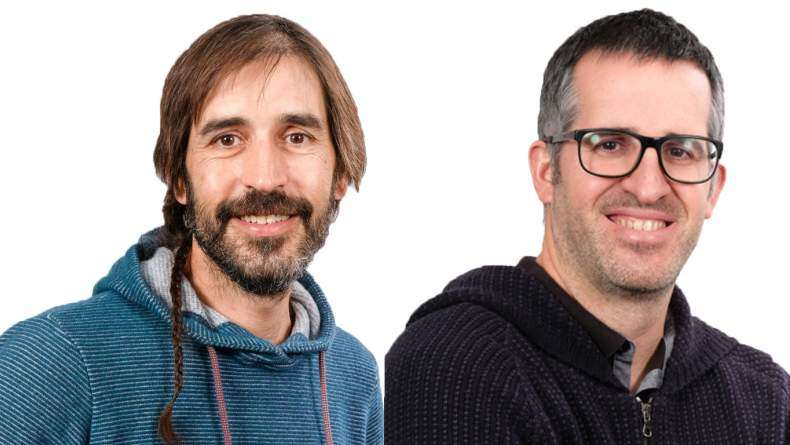BCMaterials Fortnightly Seminar #52: Catarina Lopes and Daniel Salazar

CATARINA LOPES
(BCMATERIALS)
THE CONTRIBUTION OF IONIC LIQUIDS IN THE DEVELOPMENT OF NANOGENERATORS
The development of low weight and flexible nanogenerators are in demand for low-power portable devices. Currently, most of the nanogenerators are based in the piezoelectric and triboelectric effects, and despite the good results obtained with these materials, there is an incessant search in the development of other possibilities. In this context, the versatility of the ionic liquids and their interaction with material surfaces, open new perspectives for the arising of new types of nanogenerators. In this presentation, some results obtained with polymer@ionic liquid composites will be presented.
DANIEL SALAZAR
(BCMATERIALS)
DEVELOPMENT OF NEW TETRAGONAL THMN12-TYPE PHASES WITH LOW RARE EARTH CONTENTS FOR PERMANENT MAGNET APPLICATIONS
In recent years, the critical supply of the raw rare earth materials, has motivated the search for rare earth-free and rare-earth-lean hard magnetic materials. Tetragonal R(Fe,M)12 compounds (R = rare earth, M = Co, Ti, Mo, Si…), with the ThMn12 phase structure, have long been of interest as permanent magnet materials with reduced R content, but some stability issues have to be overcome first. To further exploit the advantage of low R content, particular attention has been recently paid to compounds with cerium, the most abundant and least “critical” rare earth metal. Although the mixed valence state of the Ce atoms has an unfavorable effect on the Curie temperature, several substitutions for Ce in the Ce(Fe,M)12 compounds stabilizes the 1:12 structure and promote high Curie temperatures [1,2]. The alloys studied in this work have a single ThMn12 phase at several substitutions, as deduced from X-ray diffraction. High magnetization (>100 A·m2/kg), Curie temperatures >300ºC and enhanced coercivity by different substitutions, make them suitable for permanent magnet applications. To gain further knowledge of the magnetic structure and intrinsic magnetic properties of these compounds, were carried out several experiments as Mössbauer spectroscopy, Neutron and X-ray diffraction, magnetometry (VSM and SQUID) and electron microscopy. [1] A.M. Gabay, et.al. AIP Advances 6 (2016) 056015. [2] A. Martin-Cid, et.al. Phys. Status Solidi C (2016) 1-3.Related news
María Calles, nueva doctora de BCMaterials
Queremos felicitar a María Calles García por haber obtenido su doctorado en Ciencia y Tecnología de Materiales por la UPV/EHU. El 4 de diciembre María realizó una brillante defensa de su tesis...Charla invitada con investigadores del Instituto de Microelectrónica de Barcelona (3 de diciembre)
El próximo 3 de diciembre, a partir de las 12:00 en el auditorio Martina Casiano de Leioa, BCMaterials recibirá a los investigadores titulares del Instituto de Microelectrónica de Barcelona (IMB-CNM...Charla invitada con Liu Yao sobre baterías de metal-litio (2 de diciembre)
El próximo lunes 2 de diciembre, Liu Yao, profesor del Shanghai Institute of Applied Physics presentará una charla invitada en BCMaterials titulada ‘Li Metal Batteries: From Liquid to Solid-State’....Éxito del workshop anual de BCMaterials, dedicado a materiales críticos
La exitosa edición 2025 del workshop anual de BCMaterials reunió el pasado 19 de noviembre en Leioa a un centenar de asistentes para examinar el estado del arte y debatir sobre los materiales...



